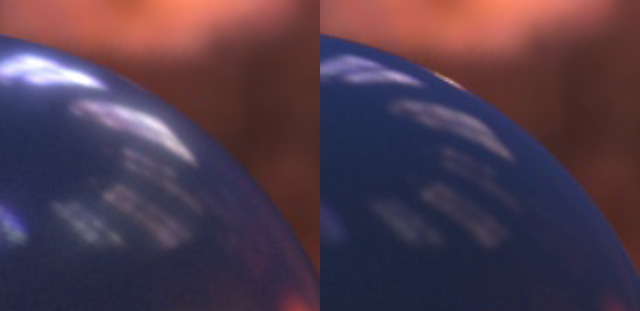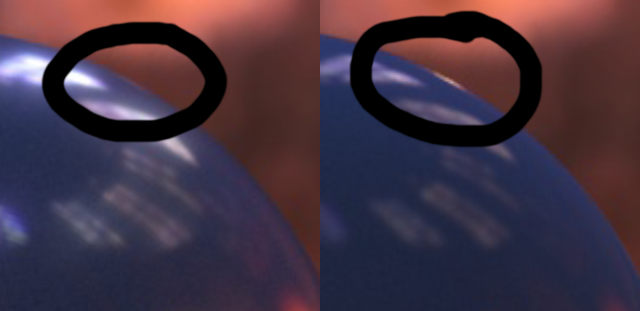One important consideration with shading models is that physically based models don’t necessarily look like the real world. They might, but usually do not.
The goal of shading models in games is to create simple, fast shading models that match the look of materials in the real world. Physically based rendering means those formulas are based on mathematical models. The catch is that real world surfaces don’t match the idealized surfaces that those lighting models assume.
Let’s start with an example. Do these two images look the same?

Those images came from the supplementary material from Experimental Analysis of BRDF Models. You hopefully have already heard of the MERL database. Basically, they did some very accurate measurements of surfaces to create a 90x90x90 volume texture of the isotropic BRDFs. Then in that paper, they solved the models to the real materials to see how well they fit.
The image above comes from the first one in the list: Acrylic-Blue. The left side is the measured data. The right side is the solve to Cook-Torrance. Does it match? Of course not. Here is a zoom of the upper right.

At a glance, there are two obvious issues:
- The overall specular is too dark.
- The specular has a softer falloff with a "bloomy" look.
In theory, these two problems could be solved. We could make the specular brighter. We could also add a second specular lobe. But there is another hidden issue. Look at the circled areas.

At the very, very edge the Cook-Torrance model has a very bright highlight which is much darker in the real data. So Cook-Torrance fundamentally does not match the ratio of direct angles to grazing angles that the real surface has. If we made the overall specular brighter to match the majority of the highlights, then the specular at the very silhouette would be out of control.
There is a misconception that physically based models are “right” and hacky tweaked models are “wrong”. It’s simply not true. The physically based models are based on theoretically perfect materials that don’t exist in the real world. While the physically based models tend to be less wrong than the hacky artist-made models, they still are not exact and should not be treated as sacred.
If you look at the full supplemental material, you will see that many of the surfaces do not match very well. At a glance they look okay. And the rougher surfaces tend to match pretty well. But when you closely look at the specular highlight the shape of the lobe and the ratio from inner to outer does not match for many of the surfaces, especially the smoother ones with sharp highlights.
I’m not saying that artists should be allowed to do ridiculous things like making the silhouette of a surface more orange because it “looks better”. Rather, physically based lighting models are best used as a starting point. And if you have legitimate visual reference that the lighting model is wrong, then it is ok to tweak it.
comments powered by Disqus
